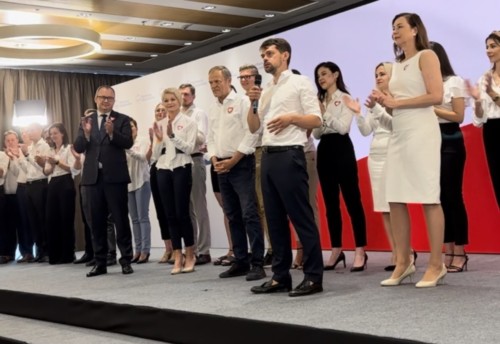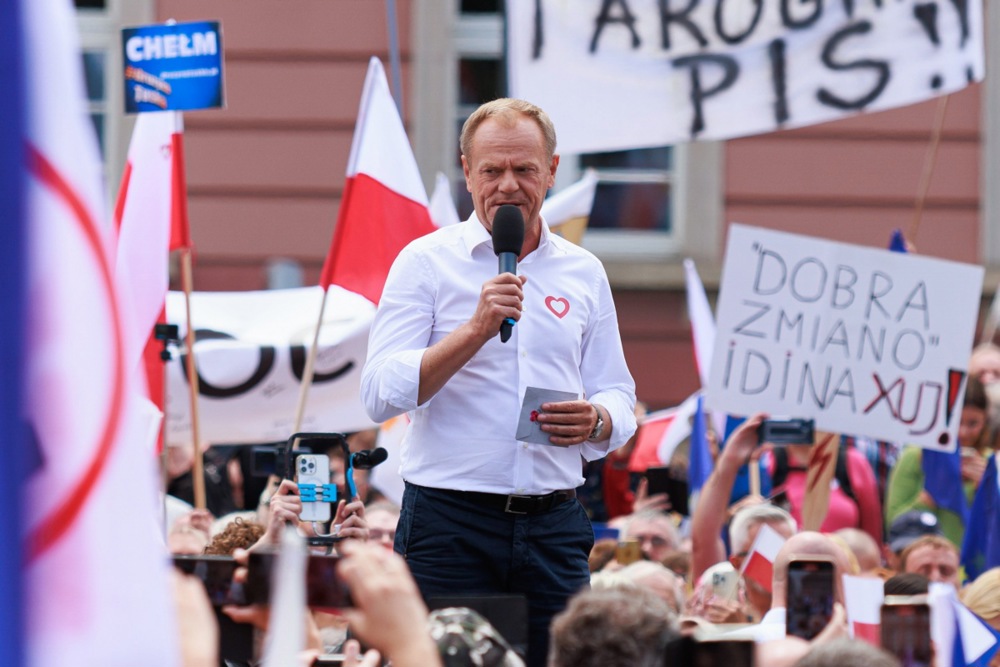The Polish opposition parties of the Centre and Left who failed to unite to fight the election for control of Poland’s Lower Chamber of Parliament have managed to produce a joint list of candidates for the election to the Upper Chamber, the Senate.
The four entities involved are the liberal PO-dominated Civic Coalition, the Left party, the Polish People’s Party (PSL) and Poland 2050. They have between them agreed a share-out of the 100 Senate seats to be contested.
There are two reasons why the agreement has come into being at the level of the Senate. The first is that, since the 100-member Senate is elected by a first-past-the-post system, to have stood against each other would have deprived them of any chance of controlling the Senate. The second is that these parties managed to field a joint list of candidates in 2019 and managed, narrowly, to take control of the Senate from the ruling Conservatives (PiS).
The Senate has very limited powers. It can reject or amend legislation proposed by the Lower House within a month of receiving it. The Lower House can then overturn the Senate’s decision. This is why the election for its members is often called “the forgotten election” and is usually eclipsed by the election to the Lower House.
Despite controlling the Senate for the past four years, the opposition has not been able to seriously affect any legislation that has come from the ruling PiS-controlled Lower House. This means that winning the Senate was a pyrrhic victory, at best a consolation prize.
It is the 460-member Lower House (Sejm), that appoints and dismisses governments and has the final say on any legislation. It is elected by proportional representation in 41 multi-member constituencies.
The four parties that have allied for the Senate elections are standing on three separate election slates for the Lower House. Only the PSL and Poland 2050 have joined forces on one list in that contest. To obtain representation in the Lower House they have to reach 5 per cent for single parties and 8 per cent for multi-party coalitions.
The leaders of the four parties at their joint press conference to announce the Senate agreement on August 17 claimed their alliance was proof that they are capable of working together and will be able to form a government if their three separate lists can obtain a majority of seats in the Lower House.
The fact that a proportional representation system exists for the election to the Lower House is not the only reason why the opposition parties have failed to produce a single list for that more important election. A major factor has been that the PSL and Poland 2050 fear dominance by Donald Tusk’s PO and also of the smaller parties losing their identity.
The PO has poll ratings just short of 30 per cent, whereas the Left and the PSL/Poland2050 coalition have ratings of around 10 per cent.
There was also some painful experiences from the past to draw upon. These parties had united on one list for the European Parliamentary election in 2019 and lost to the ruling PiS 45 to 38 per cent. They also will have noted the substantial defeat suffered by the united Hungarian opposition in the 2022 general election in that country.
The one opposition party not joining the Senate opposition pact is the right-wing Confederation party. Its profile of being an anti-system party keeping equidistant between both the PiS and the liberal and Left opposition precludes any participation in any electoral pacts with either. But it also means that the Confederation has little or no chance of getting any seats in the Senate.
The race for the Senate will therefore be a straight one between a PiS candidate and the anointed joint-opposition candidate in each of the 100 constituencies.
The election and the politics of the Lower House will not be so simple and it is that chamber which will be the focus of the party campaigning over the coming two months.





